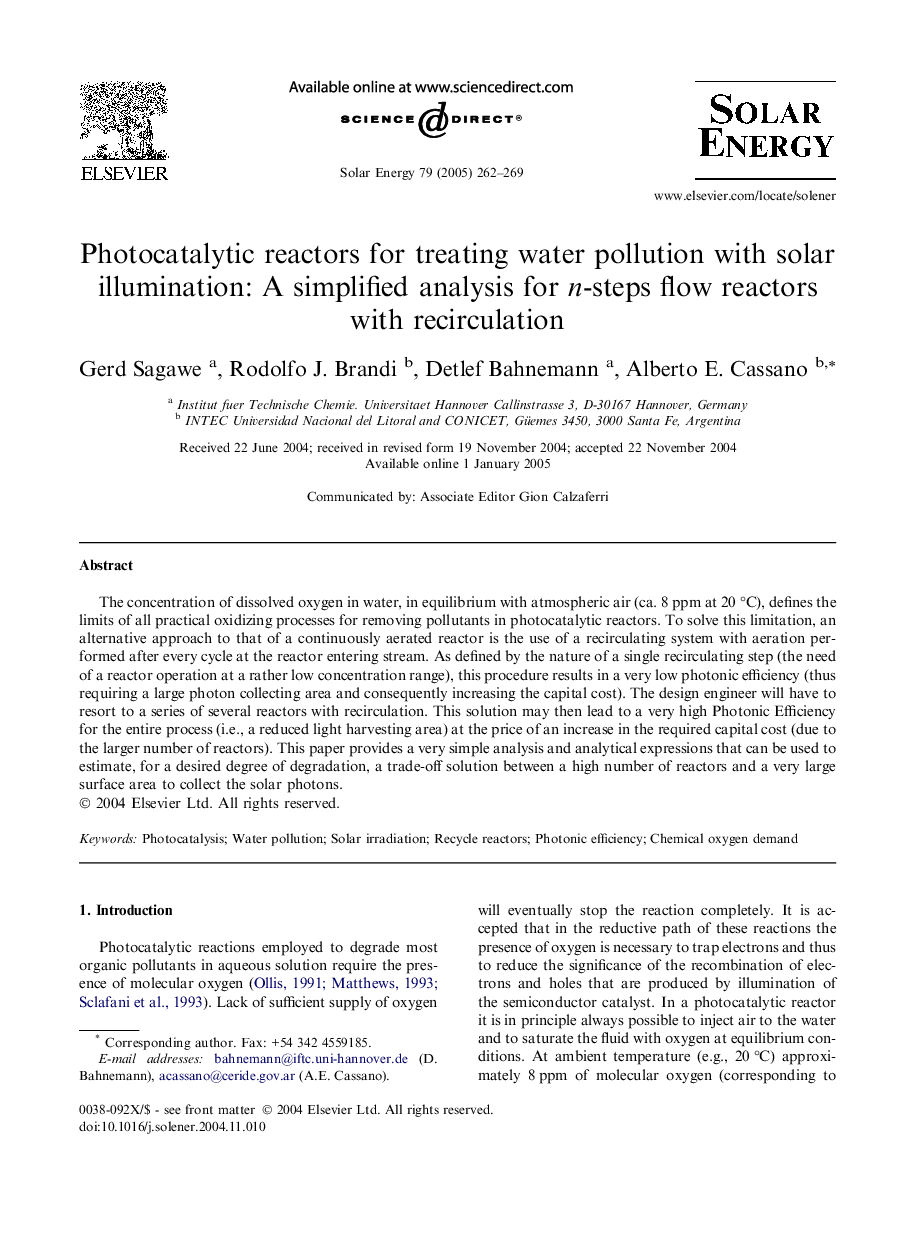| Article ID | Journal | Published Year | Pages | File Type |
|---|---|---|---|---|
| 10642926 | Solar Energy | 2005 | 8 Pages |
Abstract
The concentration of dissolved oxygen in water, in equilibrium with atmospheric air (ca. 8 ppm at 20 °C), defines the limits of all practical oxidizing processes for removing pollutants in photocatalytic reactors. To solve this limitation, an alternative approach to that of a continuously aerated reactor is the use of a recirculating system with aeration performed after every cycle at the reactor entering stream. As defined by the nature of a single recirculating step (the need of a reactor operation at a rather low concentration range), this procedure results in a very low photonic efficiency (thus requiring a large photon collecting area and consequently increasing the capital cost). The design engineer will have to resort to a series of several reactors with recirculation. This solution may then lead to a very high Photonic Efficiency for the entire process (i.e., a reduced light harvesting area) at the price of an increase in the required capital cost (due to the larger number of reactors). This paper provides a very simple analysis and analytical expressions that can be used to estimate, for a desired degree of degradation, a trade-off solution between a high number of reactors and a very large surface area to collect the solar photons.
Related Topics
Physical Sciences and Engineering
Energy
Renewable Energy, Sustainability and the Environment
Authors
Gerd Sagawe, Rodolfo J. Brandi, Detlef Bahnemann, Alberto E. Cassano,
